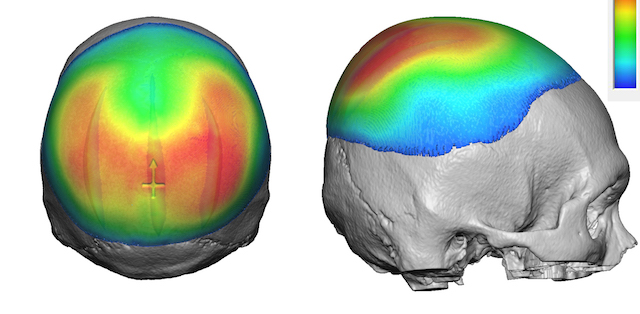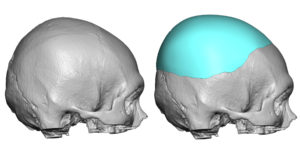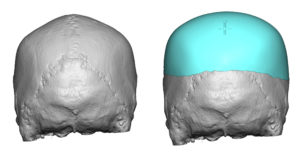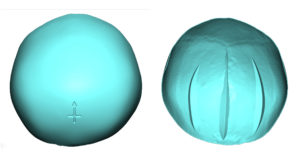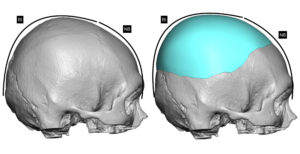Background: The shape of the skull varies widely amongst people. Despite this variability there are certain skull shapes that are viewed as more pleasing than others. In general a more convex shape is desired whether seen from the side or front views. But beyond the general concept of convexity no specific shape numerical measurements exist that describe what an aesthetically pleasing head shape should be.
One ‘beauty approach’ to determining the most aesthetic skull shape has been the ‘nasoiniac arc’. This is a midline measurement taken in the side view between the frontonasal junction at the front of the skull back to the inion. (external occipital protuberance) In humans the nasoinion arc overlies the brain within the supratentorial compartment. The two distinct demarcation points along the nasioiniac arc are the bregma and lambda. Bregma is the junction of the coronal and sagittal sutures and lambda is the junction of the lambdoid and sagittal sutures. Bregma subdivides the nasioiniac arc into a frontal arc (the surface distance between the nasion and bregma) and a parieto-occipital arc. (the surface distance between bregma and the inion).
Thee convexity of the skull can be assessed by studying the nasoinion arc and the ratios between between the nasion-bregma (NB) arc and the bregma-inion (BI) arc. It has been reported that the subdivision of the nasioiniac arc by bregma into two unequal arcs is analogous to the geometrical division of a line into the Golden Ratio of roughly 1.6. It has been hypothesized that the well known Golden Ratio concept, which has been shown to exist in many other biological systems, may be present in human skull as well.

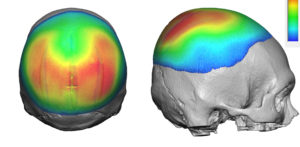
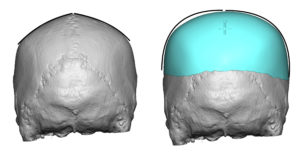
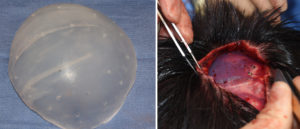
It is unknown (at least to me) whether the Golden Ratio concept is a useful one in which to design custom skull implants. But I will continue to make these measurements as such custom skull implants are designed to determine if an aesthetic pattern or consistency is seen.
Case Highlights:
1) The shape of the skull is a dual assessment of what is seeing in the side and front views, both of which has different desired curves.
2) The value of the Golden Ratio is achieving an improved head shape in custom skull implants remains unproven but can be measured by nasoinion arc measurements.
3) A more curved shape of the skull in the frontal view is often desired.
Dr. Barry Eppley
Indianapolis, Indiana

